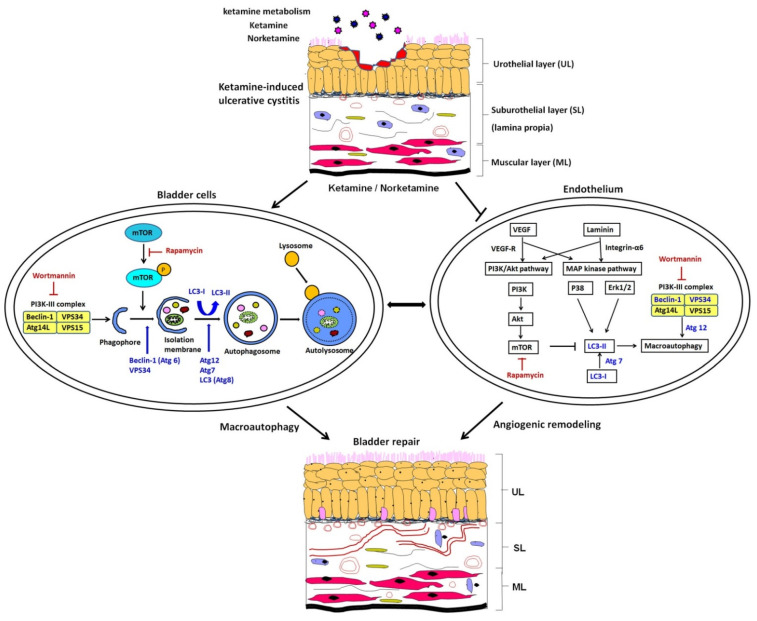Figure 9.
Representative image for the anti-angiogenesis potential of autophagy. The proposed potential mechanism of anti-angiogenesis was induced by ketamine and its metabolite through PI3K/Akt/mTOR pathway, leading to contribution to the pathogenesis of KIC. Our observations implied that treatment with ketamine significantly resulted in bladder overactivity, enhanced interstitial fibrosis, impaired endothelium, inhibited angiogenesis, and elevated the phosphorylation of Akt. However, these changes were ameliorated in the ketamine+rapamycin group. The application of rapamycin caused an inhibitory effect on vascular formation, removed ketamine metabolites, decreased the inflammation, and ameliorated bladder hyperactivity, leading to improving bladder function in KIC, while wortmannin improved bladder angiogenesis by increasing capillary density and VEGF expression, to reverse anti-angiogenic effect to repair KIC.

